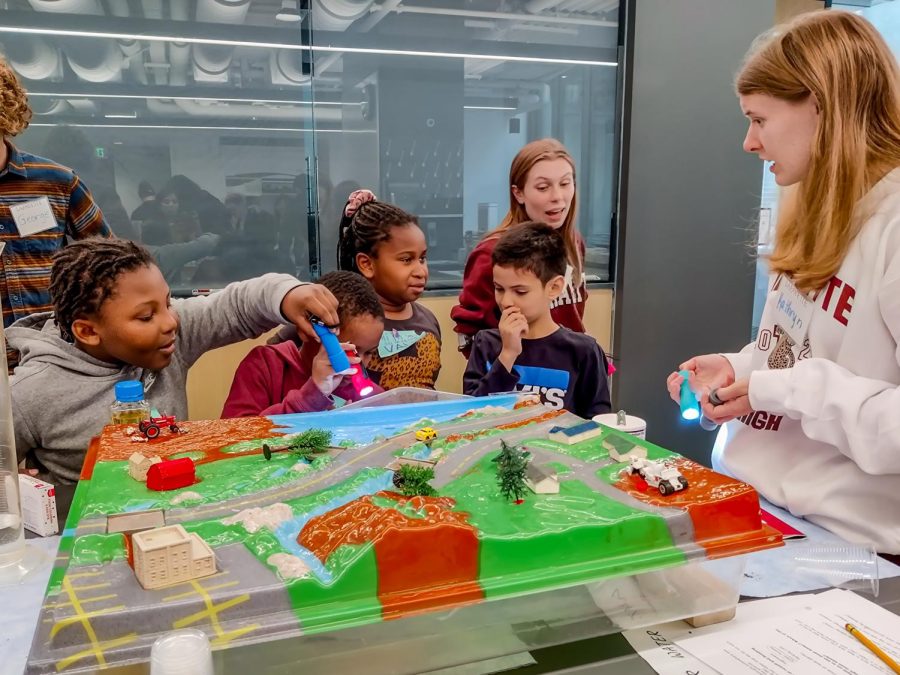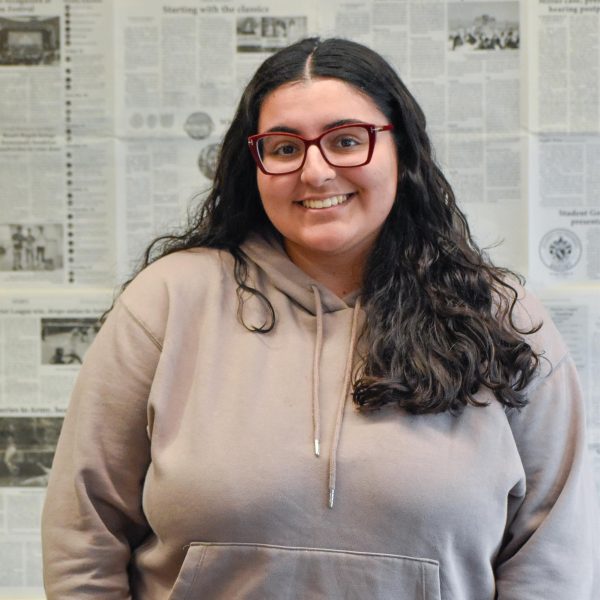You may not associate an advanced environmental engineering class with fourth graders, but the Landis Center’s Connected Classroom program makes those two things quite the pair.
The program seeks to teach young students about higher-level learning, as well as teach college students how to talk about their respective fields with non-professional or non-academic audiences.
Professor Leena Shevade, a civil and environmental engineering visiting assistant professor, is currently employing the program in her Environmental Engineering course, which hosts students from Paxinosa Elementary School in Easton.
Shevade’s goal is multifaceted and benefits both the fourth-grade students and the students in her class.
“One of my learning objectives for this course is my student should be able to communicate science with non-technical people, non-science people and from a range of ages or ethnicities,” Shevade said. “[Students learn] how to take a big piece of information, and then how [to] break it down into smaller pieces that are digestible to [fourth-grade students].”
According to Naomi Shertzer ‘25, a student in Shevade’s class, the class’s participation in the Connected Classroom program fosters a meaningful connection between Lafayette and the Easton community.
“Working with the Paxinosa students really connects Lafayette students to the community of Easton … and getting to work with them is really great,” Shertzer said.
The program allowed Shertzer to review the material the class covered in a meaningful way.
“We took what we learned and then made a presentation about it for fourth graders … That was a really great way to reflect on what we had learned and kind of use our knowledge in a way that we’re not used to [in order] to teach a completely different grade level,” Shertzer said.
Shevade said that the program is important because it allows young students to learn about relevant scientific information. The class uses their collaboration with the Paxinosa students to teach young kids about important issues, specifically the issue of water quality.
“My group did a hands-on experiment with them. We had really dirty water and the students got to pick the order of their filter system, and then they poured the water through and they could see how it filtered out the dirt … They really enjoyed [it],” Shertzer said.
Another element of the program that Shevade finds rewarding is how fulfilling it is for her students. Her students’ excitement about Connected Classroom is one of her favorite things about teaching a class involved in the program.
“[My students] were super happy with the overall experience. They could talk with the kids and they were able to communicate [science] … They enjoyed that process for sure,” Shevade said.
“It was really great to take what we had learned, and turn it into a presentation for younger kids and get to expose them to a completely new subject for them,” Shertzer said.
Disclaimer: Naomi Shertzer ’25 is the Design Director for The Lafayette.




















































































































